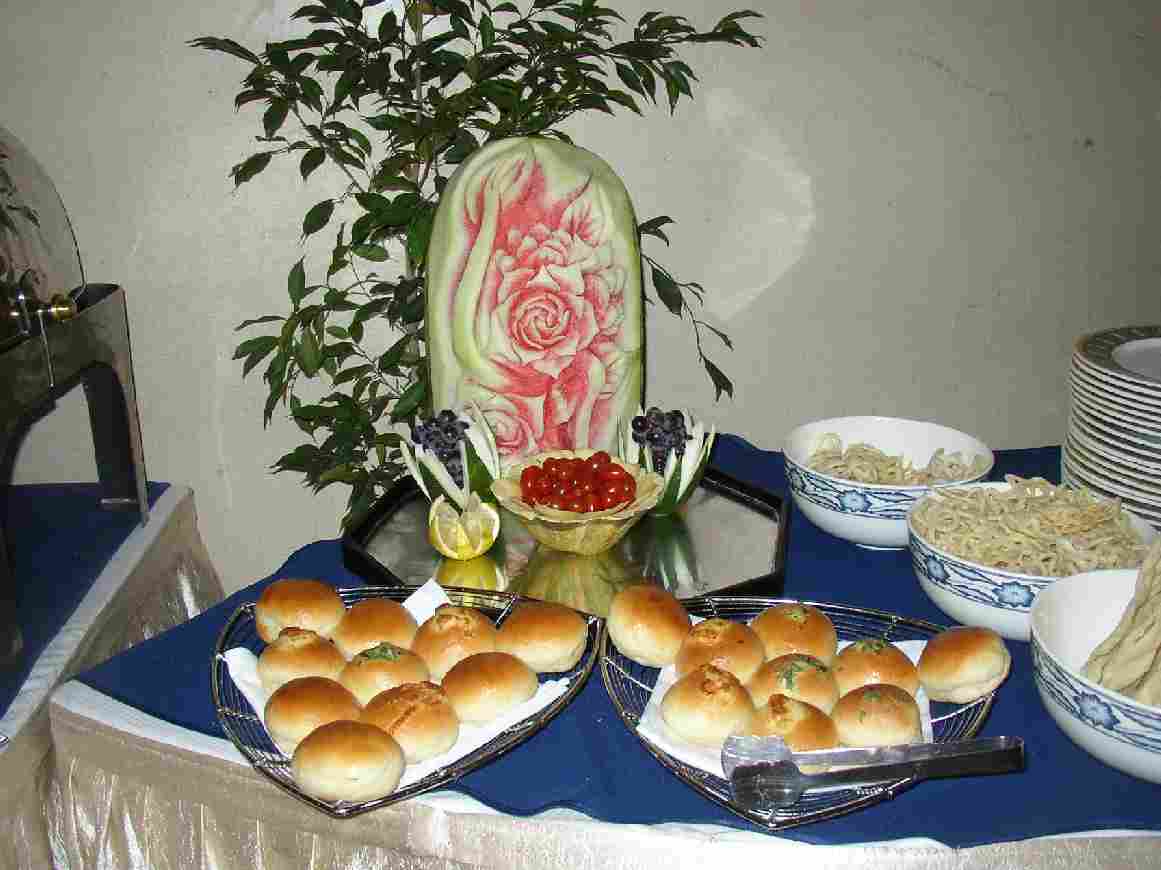Contribute
| Recipes - Carved Fruit Salads |
From Nimbupani recipe jar
08/23/2005
Even the simplest and cheapest fruits and vegetables can be turned into miniature woks of art on the edge of your plate by a few deft strokes of a fruit carving knife. Much carving is in fact very simple and can be done at home even without specialized tools. Tomato baskets, for example, merely require a firm tomato and a sharp knife. Fill your basket with mixed vegetables like sweet corn, peas and diced carrots or put in some chopped prawns or ham with a mayonnaise and basil, or even a shot of guacamole. Tomatoes of course transform beautifully into roses. Chilli flowers are one of the most common decorative garnishes. They are effective yet simple. All that is needed is that (very) sharp knife again. Carrots are also great for carving and offer infinite possibilities Before Carving 1. Before carving, fruits and vegetables must be washed and cleaned thoroughly. After carving, fruits and vegetables should be placed in ice cold water so the petals of flower designs are firm and spread beautifully. 6. Each type of carved fruit should be kept separately. This will prevent loss of all your work in the event that one type spoils. 8. Tomatoes should be soaked in a mixture of lime juice and water to prevent browning. Shallots and onions should be soaked in water before being peeled and carved to reduce irritation of the eyes.
2. Use knives with stainless steel or bronze blades. Knives with ordinary steel blades will cause discoloration of fruits and vegetables.
3. Do not carve excessively so as to avoid waste and loss of nutritional value.
4. Vegetables to be dipped into sauces should be cut to appropriate sizes.
5. Care must be exercised during carving so as to avoid bruising fruit and vegetables.
7. Store carved fruits and vegetables by putting them in containers and placing in a refrigerator, or if no refrigerator is available, by covering them with a damp piece of thin white cloth and putting them in a place protected from drafts so they do not dry and wilt.
9. Carrots should not be soaked in water before carving as this will make the flesh tougher and more difficult to carve.
10. Beets should be washed in water to which a little salt has been added. This will reduce loss of color. Also, if left standing, beets will blacken, so they should be kept moist by spraying them with water regularly.
11Potatoes should be washed with water after peeling to remove the sap and then washed again after carving. This will help prevent browning.
12 Apples should be soaked in mixture of lime juice and water before being peeled to prevent browning.
13.Cantaloupes should be washed before carving. While carving, avoid letting water come into contact with the fruit because it will lose its taste and spoil more quickly.
You may also access this article through our web-site http://www.lokvani.com/
